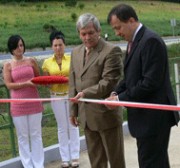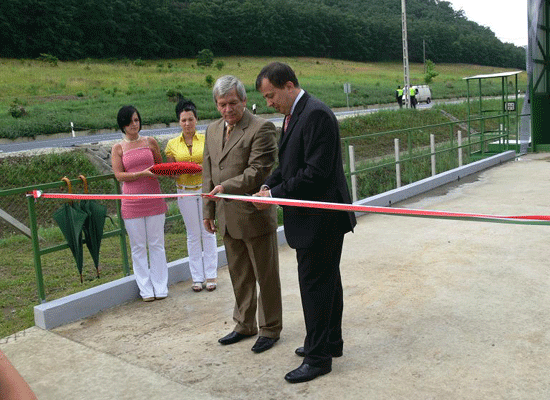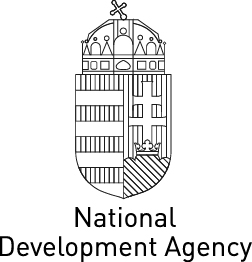State of the art waste management in the Sajó-Bodva Valley26 June 2008
 Having invested over 3 billion HUF in upgrading regional waste management, the environment of nearly a quarter of a million people will be become cleaner, safer and more European.
Having invested over 3 billion HUF in upgrading regional waste management, the environment of nearly a quarter of a million people will be become cleaner, safer and more European.
The region of Ózd continues to develop thanks to EU funding: following the approval of funding within the framework of NHDP for continuing the development of the sewer network, EU funding of over 6 billion HUF in value is now accessible for the residents of the municipality and the settlement of Farkaslyuk. The decades-long dream of the residents of the region can now come true as an outcome of the development.
Mr Lajos Oláh, State Secretary of the Ministry of Environment and Water officially handed the Ózd Waste Transhipment Station and waste-yard implemented within the framework of the Sajó-Bódva Valley Regional Solid Waste Treatment Programme. The Szuhakálló-Múcsony bypass road was also completed within the framework of this building contract, which – also within the framework of this project - diverts trucks heading to the dumping site away from the settlement of Szuhakálló. The state of the art wastewater treatment plant modernises the waste management of approximately 220 000 people in 118 settlements. On the same day, the State Secretary attended the official signing of the assistance contract concluded in connection with the development of the sewer system and treatment plant in the settlements of Ózd and Farkaslyuk. All (100%) of the households of the settlement will be able to connect to the network as a result of the wastewater investment, in relation to the current ratio of 35%.
„It is the duty of citizens to keep their environment clean and, for example, collect waste selectively; however, it is the responsibility of the state, more specifically, the local government to ensure the relevant background needed for modern waste management.” – emphasised Mr Lajos Oláh at the official handing over ceremony. Once the 3-year investment is completed, it will be possible to eliminate illegal dump sites, public cleanliness may improve and the road network of the region will develop. The investment that complies with EU standards implemented with the help of EU funding of over 3 billion HUF in value granted by ISPA and the Cohesion Fund aims to establish the complex waste management system of the Sajó-Bódva Valley. The State Secretary highlighted that Ózd and its surroundings will embark on the road of sustainable development as an impact of the investment, since sustainable waste management is equally economically beneficial for everyone.

On the same day, Mr Lajos Kiss, Head of the MEW Development Board, also officially signed – which ceremony State Secretary Mr Lajos Oláh attended as well - the assistance contract in connection with the preparation phase of the investment „Development of sewage disposal and treatment in the city of Ózd and the settlement of Farkaslyuk”. The residents of the area are in desperate need of the investment, since, for example, in Farkaslyuk, only 35% of households are connected to the sewerage network and less than 75% of households are connected to the water network. The wastewater treatment plant of the city was built at the beginning of the 1960s in the glory days of mining; today, the technical and technological state of the plant is extremely rundown, the machinery has become outdated and is no longer fit for use. The much needed development will be implemented with the help of the New Hungary Development Plan Environment and Energy Operational Programme. The net costs of the preparation work amount to 192,725 million HUF; the rate of funding is equivalent to 85% of the eligible expenditures of the preparatory work. The overall costs of the sewage disposal and treatment development programme amount to total of 6.3 billion HUF.
The sewer network will be fully (100%) developed in these settlements as a result of the project and according to plans, a ratio of at least 95-100% of the population is expected to connect to the system by 2011. Beyond the fact that it will no longer be necessary to use unprofessional alternative public utility services, environmental loads can be reduced and the quality of life of the population may improve as a result of the investment, which equally has an impact on strengthening the population retention capacity of the settlements.

